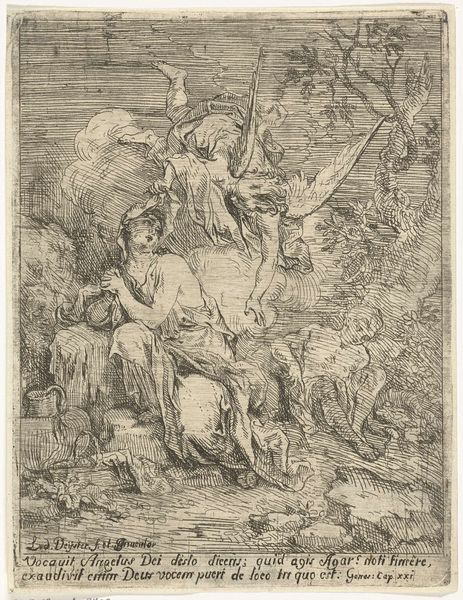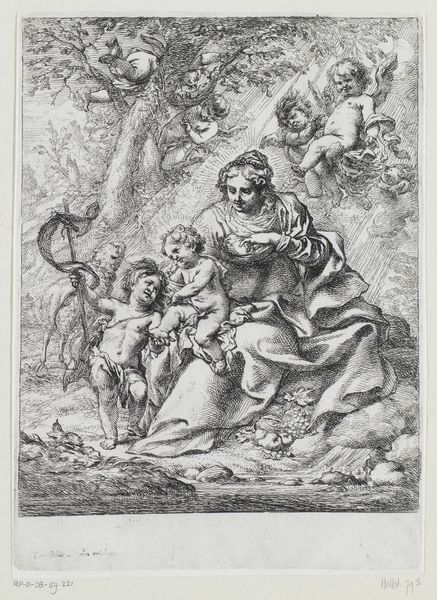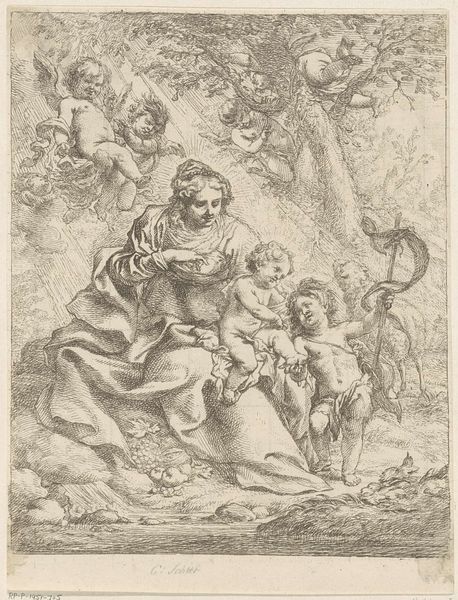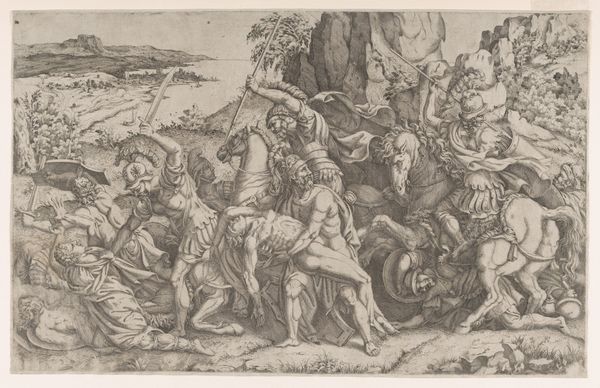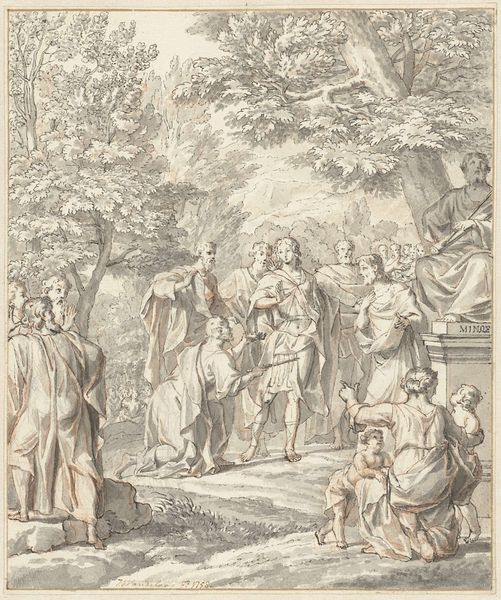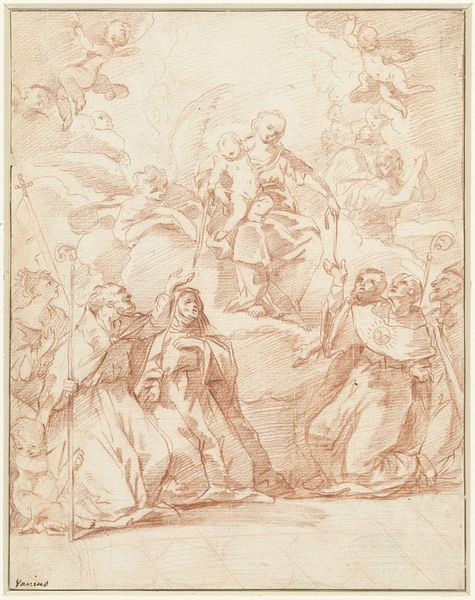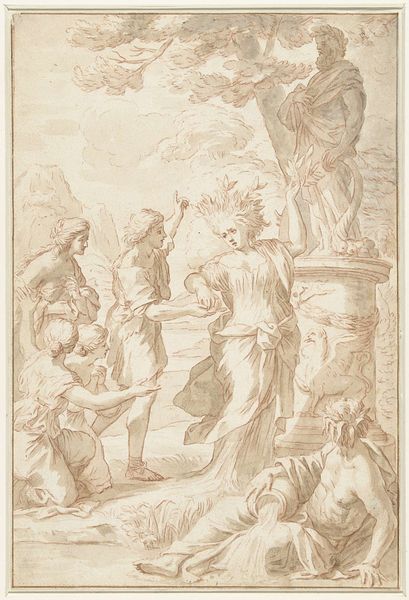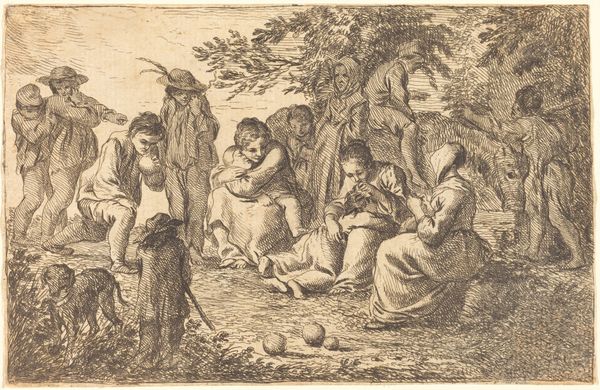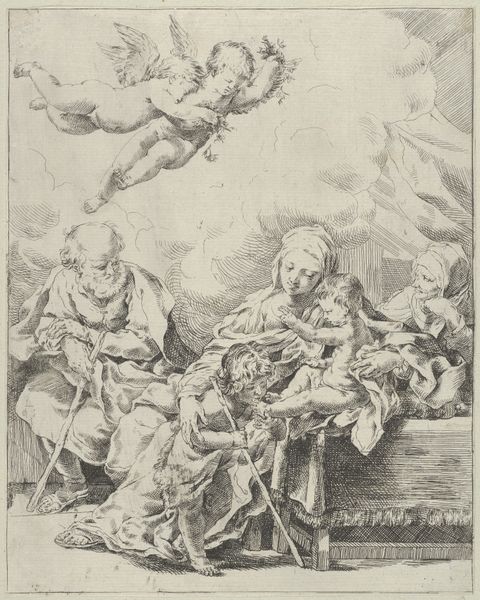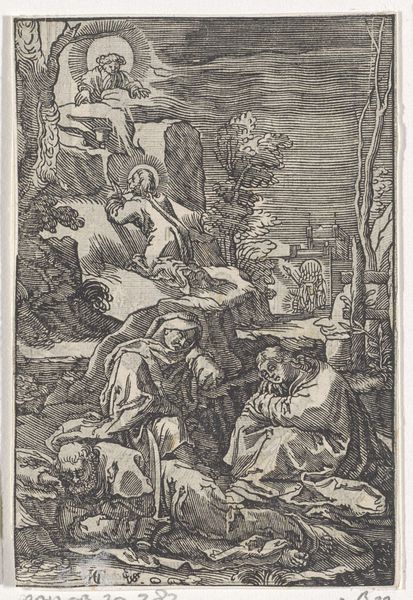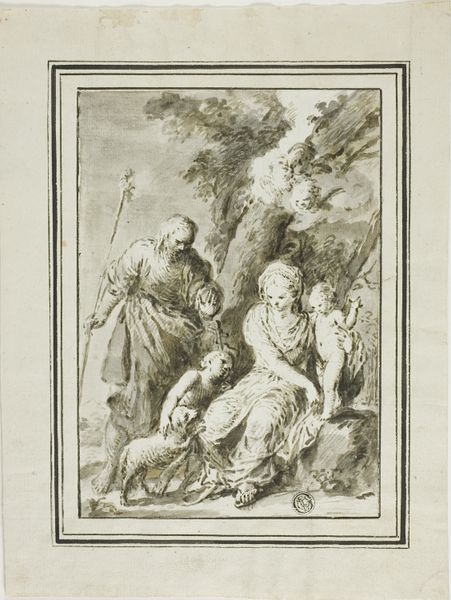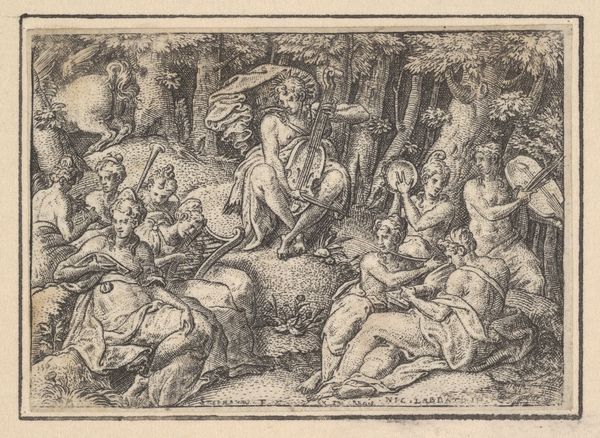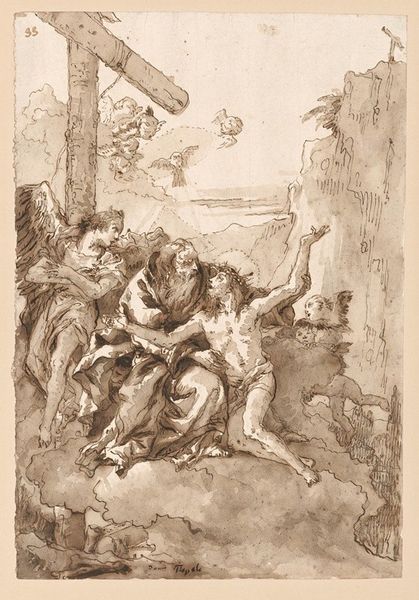
#
light pencil work
#
pen sketch
#
pencil sketch
#
personal sketchbook
#
sketchwork
#
ink drawing experimentation
#
pen-ink sketch
#
pen work
#
sketchbook drawing
#
sketchbook art
Dimensions: height 211 mm, width 154 mm
Copyright: Rijks Museum: Open Domain
Editor: This is "Heilige Familie," or "Holy Family," by Cornelis Schut, made sometime between 1618 and 1655. It’s currently housed in the Rijksmuseum. It's a very detailed sketch... I'm struck by the intimacy it conveys despite the somewhat chaotic composition. What’s your interpretation of this work? Curator: This piece speaks volumes about the intersection of religious iconography and social power during its time. Notice the seemingly effortless lines; this was no mere sketch, but a deliberate articulation of theological narratives deeply embedded in the cultural consciousness. Editor: Intimacy and social power? I wouldn't have connected the two... Curator: Look closely. The Holy Family isn’t presented as divine beings untouched by earthly concerns. Instead, we see a scene brimming with relatable humanity. Schut uses light to subtly underscore their holiness, but simultaneously places them within an accessible visual landscape. Why do you think that might be? What purpose could that accessibility serve? Editor: Maybe to make religious figures seem more relatable? To show they understood everyday struggles? Curator: Precisely. By humanizing the Holy Family, Schut’s art implicitly reinforces the power structures that elevate this particular family as exemplary. It encourages the viewer to see them not only as divinely appointed but also as models for domestic life. And models serve to dictate acceptable behavior, social expectations...control, really. Editor: So, it's about idealizing a very specific kind of family? Curator: Exactly! Consider the limited roles assigned to women during this period. What does Mary's quiet, almost subservient posture next to Joseph communicate about ideal femininity? It's a strategic visual encoding of power relations within the domestic sphere. Editor: Wow, I hadn't considered all those layers. It’s so much more than just a pretty sketch. Curator: It is precisely that seeming innocence that makes the piece such an effective tool in shaping societal norms. Editor: This really opened my eyes to seeing art as part of a larger social and historical dialogue. Thank you.
Comments
No comments
Be the first to comment and join the conversation on the ultimate creative platform.

